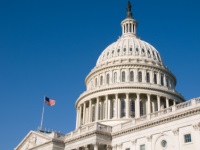As U.S. Secretary of Treasury Timothy Geithner steps down, Treasury released a January 18, 2012 update on the Troubled Asset Relief Program (“TARP”). This most recent update highlights an often misunderstood reality — Geithner’s signature program was a smashing success. As to the bailout of the too-big-to-fail banks and AIG, the truth is that TARP has generated tens of billions of dollars in profit for American taxpayers.
The hallmark of Treasury’s work during Mr. Geithner’s tenure has been its administration of the TARP. Although created in 2008 under the previous Secretary, Henry Paulson, Mr. Geithner has had responsibility for enlarging and steering TARP since January 2009. TARP came under significant criticism for use of taxpayer funds to bail out banks from diverse constituencies, spawning both the “Occupy” movement and contributing to the 2010 Republican takeover of the House of Representatives. Nevertheless, Mr. Geithner and the Treasury Department argued that TARP ultimately would produce a profit for the government. Four years later, that forecast has proven correct, at least with respect to funds provided to financial institutions, as many TARP investments have generated tens of billions of dollars in profit for American taxpayers.
The Capital Purchase Program (“CPP”) has been the primary driver of federal profits. The CPP made funds available for the Treasury Department to purchase mortgages, mortgage-backed securities, and preferred stock from financial institutions. Treasury disbursed nearly $205 billion under the CPP and, according to the Treasury’s January 18, 2012 TARP update, already has received over $220 billion in total cash back, a return of over 7%. This profit was mainly the result of dividends and gains received through Treasury’s ownership of bank stock and other assets. READ MORE


